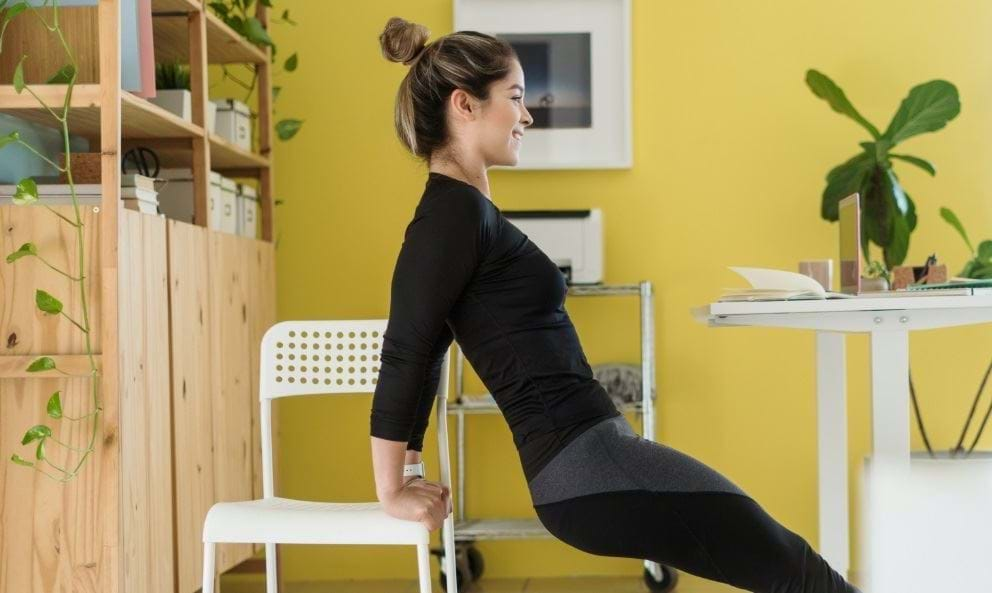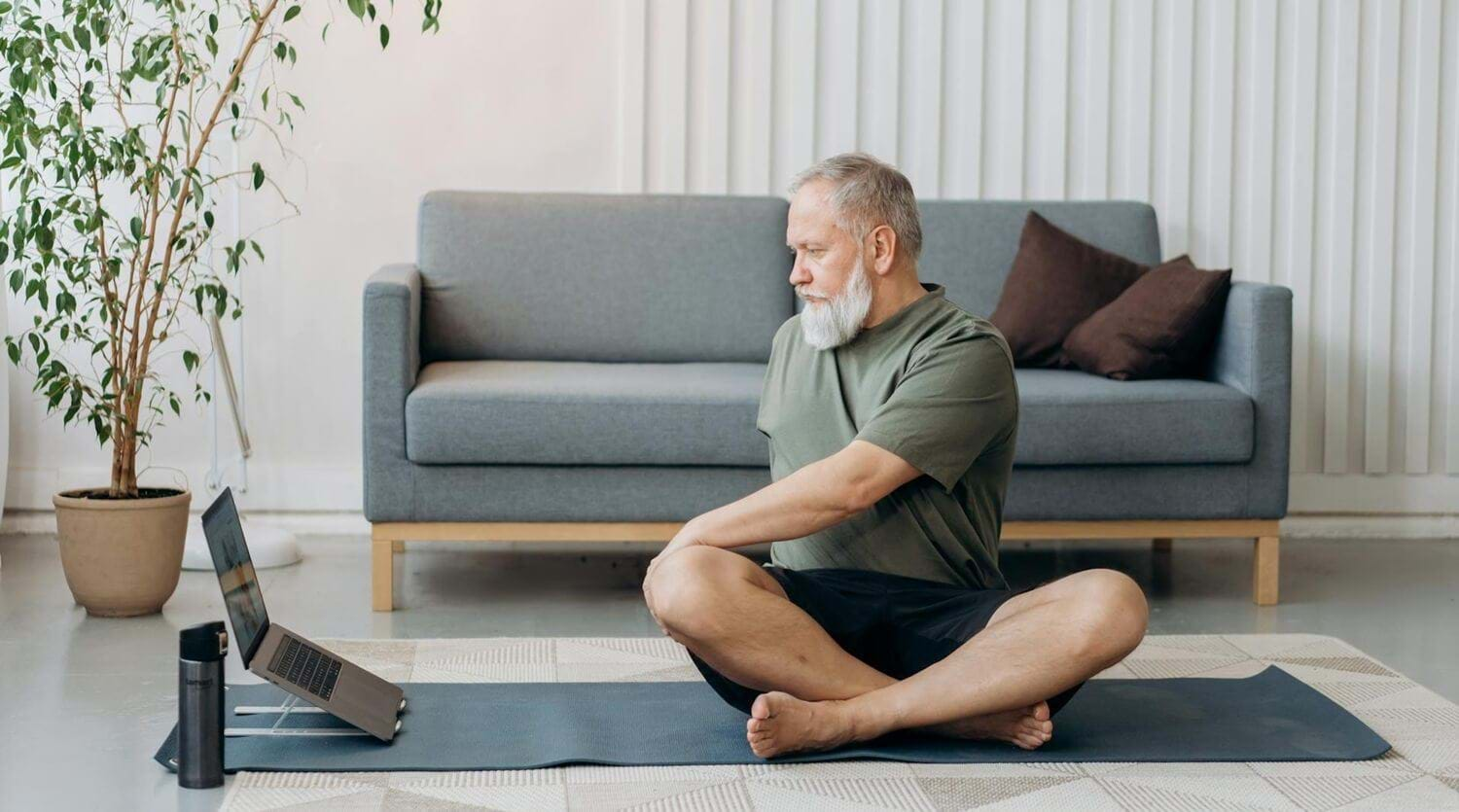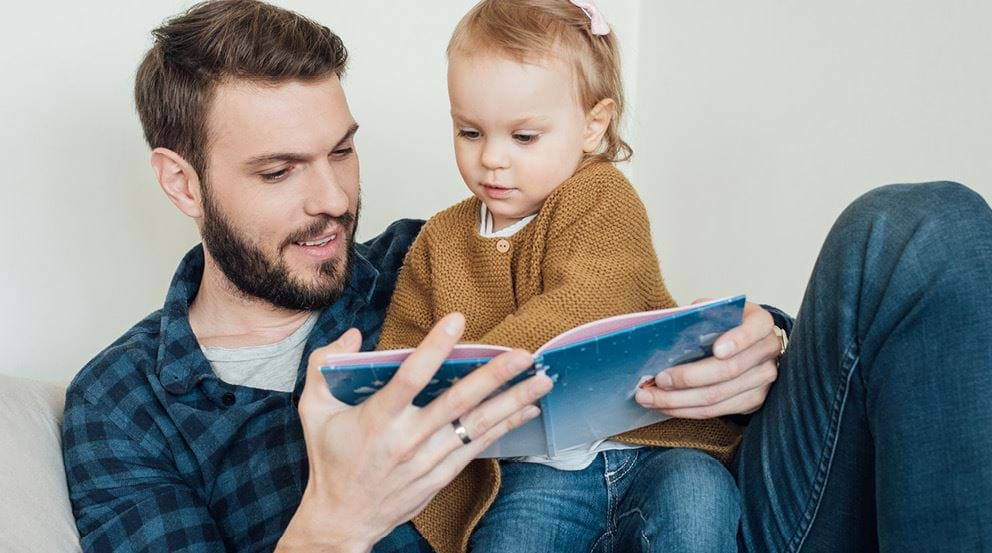The Best Desk Exercises You Can Do At Work

Studies have shown that many office workers spend around 75% of their waking hours sitting down - with time spent in front of a computer taking up a huge portion of each day. If you're sat down all day at work and not actively workout before or after your working hours, it's likely you are living a sedentary lifestyle, which can be the root of a number of health issues.
Fortunately, sitting at a desk all day doesn't mean you have to miss out on regular movement and the health benefits that come with.
Here, we'll be covering a few different approaches to exercising at your desk, helping you to ease tension and boost strength and mobility without having to step away from your computer. Read on for:
5 Office Chair Stretches
After hours of being sat at your desk, you may find you start to feel tension around your shoulders, soreness in your wrists and tightness in your hips. In an ideal world, you will take regular breaks away from your workstation to stand up, stretch out, and walk around. However, we appreciate this may not be possible throughout the day during busier periods!
The following stretches are a great way to ease out some of the aches and pains that can come from long periods of sitting at your desk. And, for those in busy working environments, most of them are also subtle enough that you can easily enjoy a good stretch without attracting attention from colleagues or customers.
Neck Circles
The areas around your neck and the tops of your shoulders are often the first to suffer from long days in front of a computer or sitting at a desk. It's also an area where we hold a lot of tension through stress. Regular stretches will help to ease any tension, and neck circles are a simple and easy way to do this.
- Sit up straight with your shoulders back and eyes forward.
- Drop your head towards your right shoulder until you feel a good stretch in the left of your neck. Hold here for a few seconds.
- Roll your head forwards and down until your chin is pressed to your chest. Hold for a few seconds.
- Roll your head to the left towards your shoulder, again, until you feel a stretch on your right hand side. Hold for a few seconds.
- Roll your head backwards, so you're looking towards the ceiling. Hold for a few seconds.
- Roll your head to the right again and repeat the above steps around three to five times.
- Continue to repeat throughout the day as necessary.
Arm Circles
Arm circles are another excellent movement for easing tightness in the shoulders and neck area. It can also help to tone up your shoulders, triceps and biceps. You can do these standing or sitting, whichever is better for you.
- Sit or stand up straight with your shoulder blades back and down and your eyes facing forwards.
- Hold both arms out to your sides, so they're level with your shoulders in a T-shape.
- Keeping your torso steady, and moving from the shoulders, start to roll your arms backwards in a circular movement. Start with small circles and build to larger ones, as it feels comfortable.
- After six or seven circles (or however many you'd like!), reverse the direction so you're moving your arms in a forward circular movement .
- Repeat throughout the day as necessary.
Wrist Stretch
Regular use of a computer mouse and keyboard can lead to soreness in the wrists as well as issues such as carpal tunnel syndrome or repetitive strain injuries. Keeping your wrists supple and flexible is a great way to prevent these issues and ease any mild discomfort (although speak to your doctor first if you're experiencing any major pain). Simply rotating your wrists is a simple way to keep them mobile, but for a really good stretch that also reaches your forearms, we recommend the below.
- Stand at your desk and with your arms by your side. Rotate your arms so your palms are facing forwards and your elbows are facing behind you.
- Place your palms on the desk in front of you, with your fingertips facing in towards your body, keeping your arms straight.
- Lean gently forwards until you feel a stretch through your wrists, forearms, and elbows.
- If you prefer to stay seated, you can hold your arm straight in front of your body with your palm facing up - use your other hand to pull the fingertips down so they're pointing towards the table, while keeping your wrists and arm straight.
Seated Spinal Twist
It's not just your upper back that can suffer from sitting all day - you can carry tension in your lower back too. Seated spinal twists are an excellent way to encourage spine mobility and benefit your whole upper body.
- Sit up straight in your chair with knees around hip-width apart.
- Keeping your lower body steady, gently twist around to the left, taking hold of the back of your chair with your right hand if you can.
- Don't pull yourself round, but use that right hand to steady yourself and maintain the stretch.
- Hold for a few seconds breathing deeply before repeating on the right hand side.
Seated Figure 4
And let's not forget those hips and glutes - both can become stiff, weak, and achy when you're sitting at a desk all day. A seated 'figure 4' is an excellent way of stretching right into these areas, keeping them mobile and flexible.
- Sit up straight in your chair with your knees hip-width apart.
- Lift your right leg and place your right ankle on your left thigh, just above the knee.
- Relax your right knee until you feel a stretch through your hip and glutes.
- If you'd like a deeper stretch, then, keeping your back straight, lean forwards, so your chest drops towards your legs.
- Hold for as long as you like, and repeat with the other leg.
5 Strengthening Desk Exercises
If your main reason for exercising at your desk is less about easing tension and more about building strength and muscle, consider adding these exercises in throughout the day (although be aware that these are a lot less subtle than the desk stretches). Remember, to build muscle you'll need to continually overload the muscles so these exercises are unlikely to be enough by themselves, but they're a great addition to any training programme if you want to add a little extra outside of the gym.
Tricep Dips
Boost your upper body and arm strength (particularly the triceps) with tricep dips - you'll just need a sturdy and static chair that won't twist as you dip! Check out our guide for more tricep exercises.
- Sit on the very edge of the chair and grip your hands on the edge of the chair either side of your hips.
- Keeping the arms extended, shuffle your feet forwards so you have room to lower your torso to perform a dip. Keeping your legs straight makes this more challenging, or you can have your knees bent for an easier version of the exercise.
- Lower your body whilst keeping your chest high and open to avoid hunching forward. Keep your elbows tucked directly behind your shoulder blades to protect your joints. You should feel your arms and triceps working.
- Pause before extending your arms back up to starting position.
Chair Squats
Squats are considered by many to be one of the best dynamic strength exercises, that engages your core, glutes, and leg muscles. You can easily squeeze a few in throughout the working day as they can be done with just bodyweight. We've given an example using a chair, but feel free to complete these without one too - our squats guide showcases plenty of different options for you to try.
- Stand tall in front of your chair, with feet slightly wider than hip-width distance apart, feet slightly turned out.
- Roll your shoulders down and away from the ears. This will help you to maintain a straight spine.
- Look straight ahead and take a deep breath in and engage your ab muscles. Then bend your knees and sink your hips back while lowering your hips towards the floor.
- Lower until your bottom just touches the chair, before straightening your legs and exploding back up to standing position, and then exhale.
- Repeat.
Calf Raises
Keep your ankles and calves supple and mobile with regular calf raises throughout the day. They're easy to do while stood at your desk, or throughout the day while you're waiting for the kettle to boil. And they couldn't be simpler either!
- Stand straight with shoulders back.
- Push through your toes and lift your heels, so you're standing on tiptoe (feel free to hold onto something for balance if you need it, but make sure you're not using your arms to pull yourself up).
- Ease back down in a controlled way. Repeat 10-12 times. Try and do a couple of sets throughout the day.
- To increase the challenge, stand with your toes on the edge of a step or stair - this allows you to extend the movement to be more challenging.
Seated Bicycle Crunches
Just because you're sitting down, doesn't mean you can't work and strengthen those abs! There are several different 'levels' of movement in a seated bicycle crunch, and depending on your existing core strength and ability, you can choose whichever works for you, from a regular ab twist to a full bicycle crunch.
- Sit in your chair (you will need a static non-swivel chair) with a straight back and engaged core.
- Raise your arms and touch your fingertips to your ears, with elbows out to the side.
- For an easy option, simply twist your torso from side to side, focusing on your ab muscles you move.
- For a slightly more challenging option, lift each knee as you twist - when you face the left side, lift the left knee, swapping to the right knee as you move to the right.
- For a bigger challenge still, lean back slightly in your chair (you may need to shuffle your bum right to the edge of your seat) and raise both legs straight out in front of you.
- Pull your left knee in and twist your torso, aiming to tap your knee with your right elbow (or as close as you can get), before straightening again and repeating with the right knee and left elbow.
Bicep Curls
You don't have to be in the gym to build strength in your arms. You can keep a small set of dumbbells in your drawer, or anything that adds a bit of weight, like a couple of cans or water bottles. No weights? No problem! You'll still benefit from these movements even if you don't hold anything in your hands, just focus on really flexing and tensing your muscles as you move. You're not just limited to bicep curls either - check out our dumbbell upper body workout ideas for more exercises you can adjust to do at your desk.
- With feet flat on the floor and core muscles engaged, hold a dumbbell in each hand with arms pointing towards the floor and palms facing your body.
- Slowly curl the dumbbells upwards towards your shoulders, rotating your wrists so your palms face upward.
- Slowly lower the dumbbells back to the start position and repeat.
Calorie Burning NEAT Movements
The stretches and strength movements mentioned above will help you to stay healthy while sitting at your desk for long periods. However, workouts aren't the only way you can stay healthy - an often-overlooked factor is NEAT, which stands for Non-Exercise Activity Thermogenesis. This refers to the energy that you burn outside of sleeping, eating and exercising, and includes anything from standing up and walking to the bathroom to fidgeting or jiggling your legs while you work.
What does this mean for you at your desk? Well, every additional bit of movement you do will helps to increase your overall energy expenditure. Try factoring in regular breaks to get a glass of water or cup of tea, or play your favourite music and have a little dance in your chair - include as much movement as you can throughout the day, even if it seems small; it all adds up! Learn more with our 7 Simple Tips to Move More and Increase Your NEAT guide.
While desk exercises are an excellent addition to your working day, nothing beats a proper workout for building strength and fitness. Find a gym near you and begin your fitness journey today. If you're not sure where to start, then consider booking in a session with a Personal Trainer at PureGym - they'll be able to provide advice, guidance and support for improving your fitness. Not ready for the gym yet? Then download the free PureGym app (even if you're not a member!) - it has lots of workouts tailored for beginners that you can try at home.


